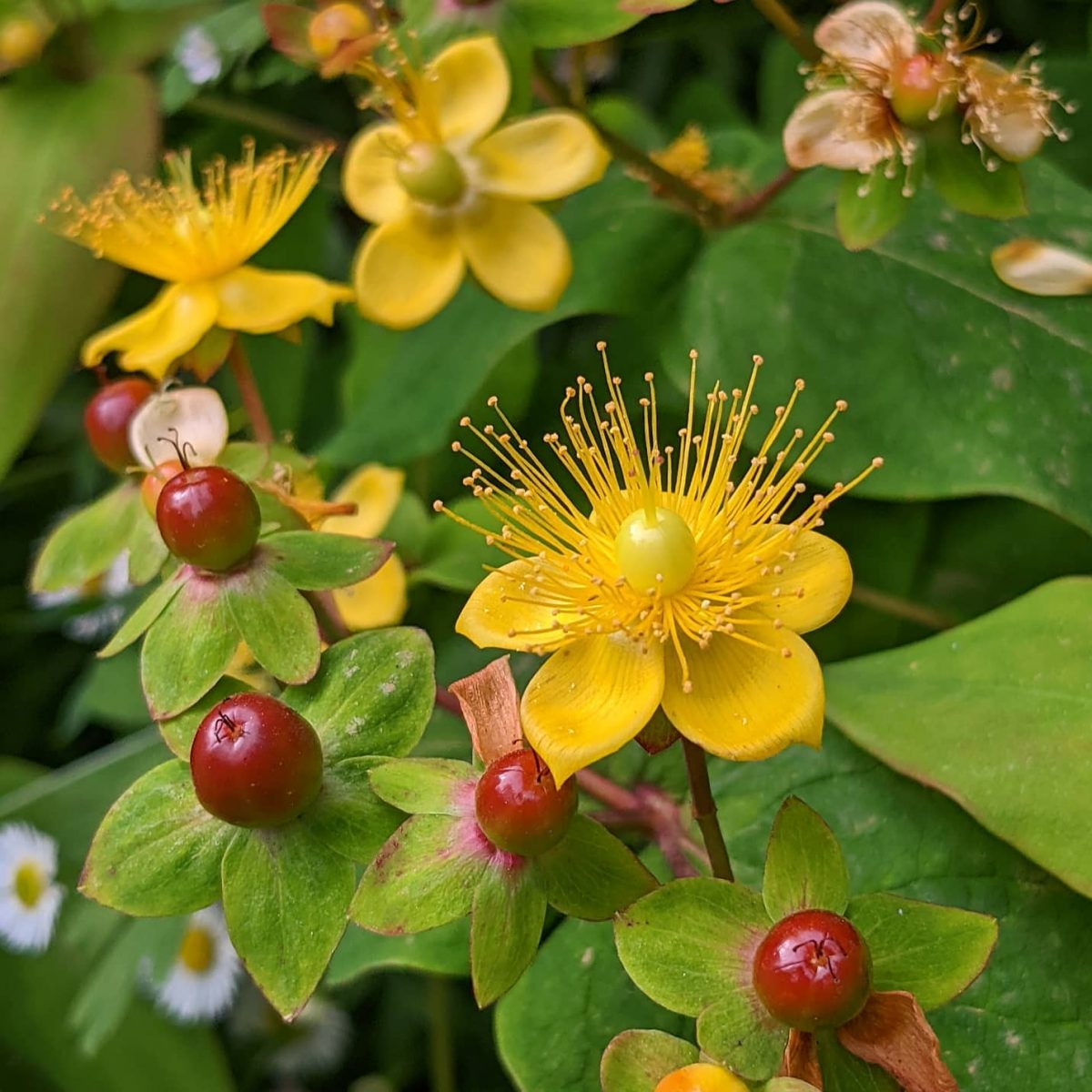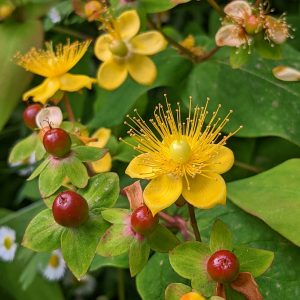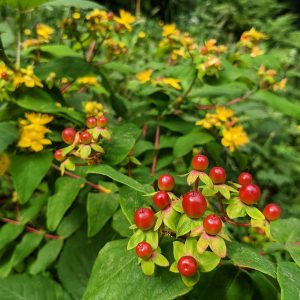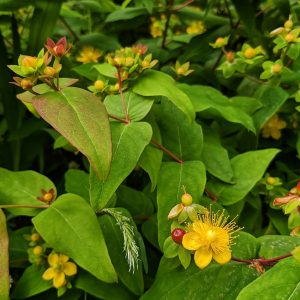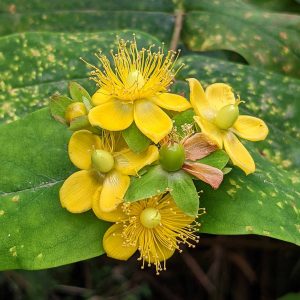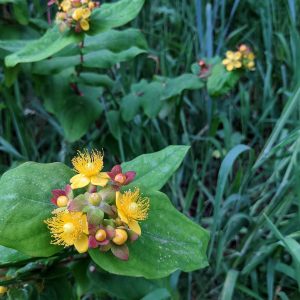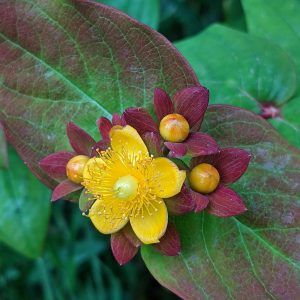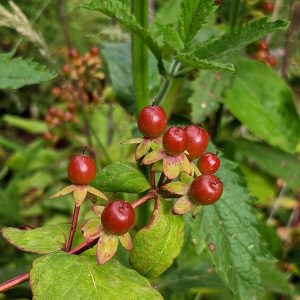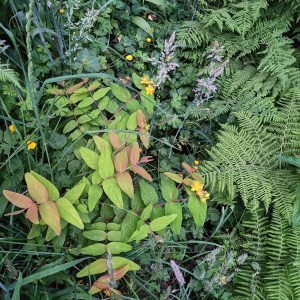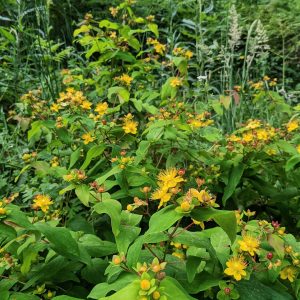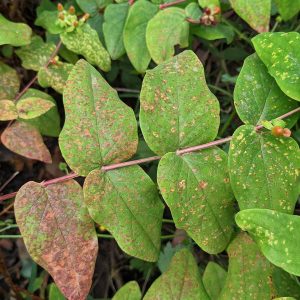Tutsan (Hypericum androsaemum), a striking Eurasian St. Johns Wort with a shrubby aspect and attractive red fruits turning black at maturity.
Naturalised in New Zealand by 1870, and grown at the Melbourne Botanic Gardens in 1882, Tutsan spread explosively once planted in Victoria’s high rainfall locales. The plant formed pocketed and genetically distinctive infestations across the state, stemming from separate introductions as suitable areas were developed with coach roads, guest houses and weekenders.
The first well-documented collection was made north of Apollo Bay in 1907 by Charles French, the Victorian government entomologist. French urged immediate action to control the plant’s spread, pointing to the then-recent disaster of the Common St. Johns Wort (Hypericum perforatum) at Bright (we’ll come to that species shortly).
Despite newspaper coverage, little was accomplished of course. The plant was collected at Healesville in 1910, and in various other temperate districts around the state in short order. Befitting its clear status as one of Victoria’s most striking weeds, Tutsan immediately attracted folklore. A 1917 Weekly Times column recounted at length the story of its introduction from the spilled luggage of a settler descending the Forrest – Apollo Bay road, noting that since the plant’s discovery on a hill south of Mt. Sabine, it had ‘scaled the hill, run down the other slope, bridged the gullies, covered hill after hill, and spread widely for a distance of 10 miles, even into the Winchelsea Shire.’
While Tutsan was declared a thistle in 1917, further infestations continued to develop, with a first record made in the Dandenongs at Upwey in 1921, a few kms west of the roadsides outside of Selby where I photographed these plants a couple weeks ago.
In 1991, a rust fungus that attacks Tutsan was found to have self-introduced into the Otways population and rapidly reduced the species to a non-factor there. However, the rust has so far proven less lethal to the infestations in the eastern ranges and in other states.
View Original Post on Instagram
Search for information about Hypericum androsaemum in the Flora of Victoria
View information and occurrences of Hypericum androsaemum on the Atlas of Living Australia
